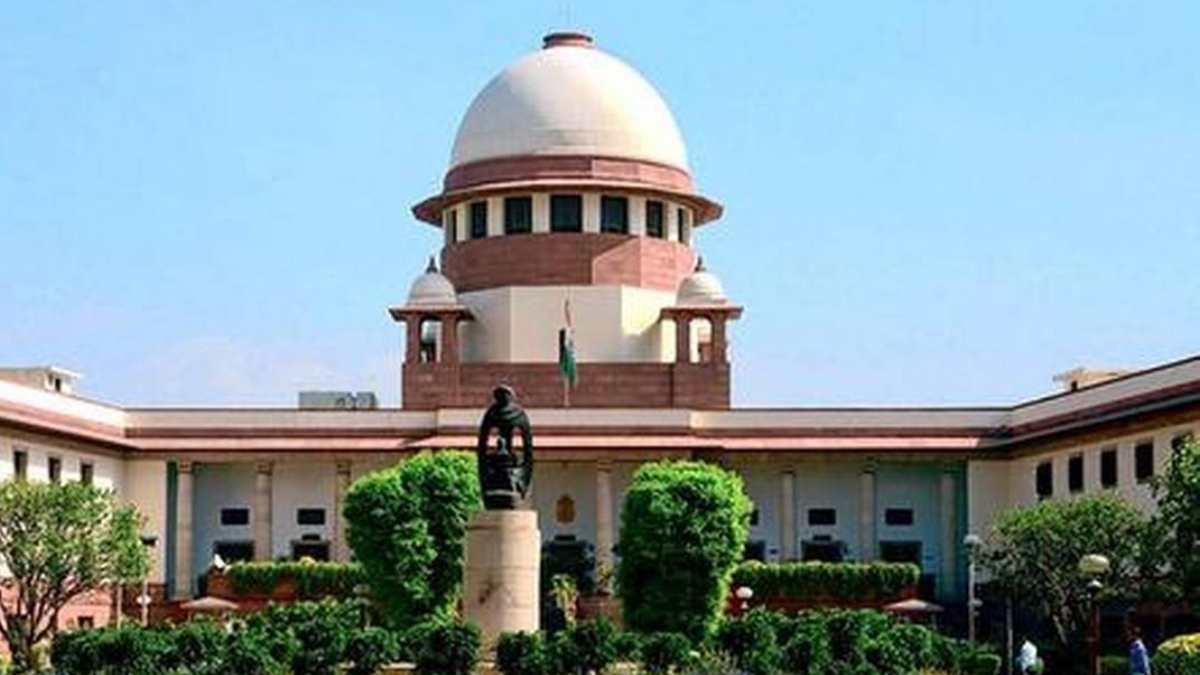If the Parliament had an autonomous right to amend the Constitution, the Apex Court had an equivalent power to review and annul any amendment that destroyed the basic structure of the Constitution. In this tussle for power between the two significant institutions, the Judges sought to achieve a win-win situation for both the Parliament and the Supreme Court.
Introduction
India has often faced and still faces situations where the pillars of its democracy clash. Kesavananda Bharati vs. State of Kerala (Kesavananda) was one such situation where the Legislature and the Judiciary of the world’s largest democracy ran in a power struggle. In the background of a tussle for constitutional supremacy, the Hon’ble Supreme Court of India on April 24, 1973 delivered what is arguably the most monumental decision in the history.
Kesavananda created history, I say this because of several reasons, viz. formation of a thirteen-judge bench of the Hon’ble Supreme Court of India, the unprecedented number of separate judgments and opinions delivered by the Bench, the number of hearings which ran into over 68 days making it the longest heard case in the history of Indian Judiciary, (the second longest being the Ram Janmabhoomi case 2020 – about 40 days), as well as the sheer length of the Judgment itself which spans about 800 pages and about 4,20,000 words long.
The significance of Kesavananda in the Constitutional Law of India is not only because of its exceptional length but also because of the part it played in preserving the integrity of the Constitution of India. The ‘basic structure’ doctrine as we see it today was first introduced in this landmark judgment. To analyse Kesavananda it is really important to first briefly understand the cases which led up to this Judgment in 1973.
Shankari Prasad v. Union of India (1951)
The validity of first amendment to the Constitution of India which condensed the privilege to property was challenged and with that, the Parliament’s right to amend the fundamental rights was challenged. A Five-Judge Bench of the Hon’ble Supreme Court of India asserted that the Constitutional scheme provided for a clear distinction between ‘ordinary law’ and ‘constitutional law’, the effect of this decision was that judicial review of the amendments to the Constitution was dis-allowed.
Sajjan Singh v. State of Rajasthan (1965)
The validity of the Seventeenth Amendment Act, 1964 that inter-alia added 44 additional Statutes relating to land reforms to the Ninth Schedule of the Constitution in order to secure their Constitutional Validity and prevent them from judicial review on the ground that they were inconsistent with any of the Provisions of Part III of the Constitution relating to Fundamental Rights. The Amendment was challenged on the ground that the Parliament failed to follow the procedure prescribed to amend the Constitution. Another FiveJudge Bench of the Hon’ble Supreme Court dismissed the petition on the ground that it was not under the scope of judicial review and held that amendment includes amendment to all provisions of the Constitution.
I.C. Golaknath v. State of Punjab (1967)
Could the Parliament amend fundamental rights? The issue was yet again before the Hon’ble Supreme Court . An Eleven-Judge Bench was constituted to examine whether Constitutional amendments could be passed to take away the fundamental rights and whether such amendments were under the scope of judicial review. Hon’ble Supreme Court of India prospectively overruled its judgment in Shankari Prasad and Sajjan Singh and held that Parliament could not amend Part III of the Constitution so as to abridge or take away any of the Fundamental Rights.
The Hon’ble Supreme Court also cleared the air with respect to Article 368 and held that it merely lays down the procedure for amendment to the Constitution. Further, the Hon’ble Court also held an amendment to be a law under Article 13(2) of the Constitution and that it was under the scope of judicial review. Thus, making it quite clear that amendments which ‘take away or abridge’ the Fundamental Rights, cannot be passed.
What is interesting to note is that the tussle between the two pillars of our Constitution continued as the Parliament to nullify the I.C. Golaknath verdict, enacted the Twenty-Fourth Amendment to the Constitution, which laid down that the Parliament’s powers to amend the Constitution were unrestricted and unlimited.
Leading to Kesavananda
Late Swami Kesavananda Bharati Sripadagalvaru, the head of Edneer Math in Kerala affected by the Kerala Land Reforms Act, 1963 challenged the state land reform legislation in Kerala, meanwhile the Parliament passed the Twenty Ninth Amendment Act 1972 which inserted certain land reform statutes to the Ninth Schedule and thus affecting the case of Late Swami Kesavananda Bharati.
Swami Kesavananda was represented by none other than Late Shri Nani Palkhivala, who challenged the constitutional validity of the Twenty-Fourth, Twenty-Fifth and Twenty-Ninth Amendments to the Constitution of India.
As I have already mentioned, the Twenty-Fourth Amendment was enacted to nullify I.C. Golaknath as the Parliament vide this Amendment stated that the constitutional amendments were not ‘law’ under Article 13, and that the Parliament had the power to amend any provision of the Constitution of India. The Twenty-Fifth Amendment gave precedence to ‘Directive Principles of State Policy’ over the ‘Fundamental Rights’ and also took away the scope of Judicial Review for policies laid down under Articles 39 (b) and 39 (c). And, the Twenty-Ninth Amendment added two land reform legislations to the Ninth Schedule of the Constitution of India.
Issues before the Hon’ble Supreme Court of India
The unprecedented Thirteen-Judge Bench of the Supreme Court of India had to decide some of the most crucial questions regarding the scope of the powers of the Parliament to amend the Constitution under Article 368, and whether those powers of the Parliament were autonomous, or there was a scope of judicial review. Quite ironically it was a judicial review of the scope of judicial review of the Apex Court of India which lasted for almost five months. The Petitioners had contended that the amendments invalidated some of the fundamental and basic principles of the Constitution and the Parliament could not derive the authority to alter such principles of Constitution from the Constitution itself. However, at the other end, the Government of India argued that there was no limit to the powers of the Parliament to amend the Constitution pursuant to Article 368 and the Parliament could do anything barring repealing the Constitution itself. Hence, it became all the more important for the Apex Court to examine the amending powers of the Parliament and to determine the constitutional validity of the amendments.
‘Basic Structure’ Doctrine and the Majority
View An unprecedented eleven separate opinions each having different views on each issue, suggesting that there was no pure indication as to what the Supreme Court actually held. Interestingly, the first time ever the Judges gave a summary of their decision.
The majority of the Thirteen-Judge Bench held that the Twenty-Fourth Amendment to the Constitution was valid, the Twenty-Fifth Amendment to the Constitution was also valid except for the part which ousted the scope of Judicial review, the Twenty-Ninth Amendment was also held to be valid, the judgment in I.C. Golaknath was overruled and it was held that there was no implicit limitation on the powers of the Parliament to amend the Constitution of India under Article 368.
However, the most important decision, was that the Parliament while amending any part of the Constitution could not alter or destroy the ‘basic structure’ of the Constitution. This decision was made by a thin majority of 7:6. The Hon’ble Supreme Court mentioned that all constitutional amendments enacted post the date of Kesavananda Judgment will have to pass the ‘Basic Structure’ doctrine. Thus, in this tussle of power, the Apex Court empowered itself to judge the validity and constitutionality of the amendments to the Constitution.
What’s interesting is that there was no concord of opinion on what the basic structure was. Each Judge prepared his own list which was not exhaustive. However, in outlining the basic structure of the Constitution, most relied upon the Preamble, the Fundamental Rights and the Directive Principles of State Policies. In words of Mr. Upendra Baxi, in this Judgment of uncertainties one thing was certain that the Judges were free to mould the ‘Basic Structure’ doctrine to struck down any constitutional amendment that attacks the very spirit of the Indian Democracy.
Observations & Analysis
It can be said that while the Judgment in I.C. Golaknath was first major indication of judicial supremacy. Kesavananda proved and established that the Apex Court had no match when it comes to authority in Constitutional matters. The Hon’ble Supreme Court drastically widened the scope of its judicial review assuming the power to examine not only the amendments affecting fundamental rights but all the constitutional amendments.
If the Parliament had an autonomous right to amend the Constitution, the Apex Court had an equivalent power to review and annul any amendment that destroyed the basic structure of the Constitution. In this tussle of power between the two significant institutions, the Judges sought to achieve a win-win situation for both the Parliament and the Supreme Court.
One of the gravest criticisms of Kesavananda is that the ‘Basic Structure’ doctrine finds no reference in the language of the Constitution. The doctrine has very little to do with what is written in the Constitution. The Judgment has also been critiqued for being too lengthy, thus making it doubtful as to what the eleven opinions collectively mean and what the basic structure essentially comprised. Amusingly it is referred to as an ‘outstanding study on lack of consensus’.
The intrinsic uncertainty of the doctrine, as well as that of the ratio in Kesavananda, brought about numerous challenges both to and under the doctrine before the Hon’ble Supreme Court. The phase following Kesavananda was one where the doctrine has evolved on a case-to-case basis, resulting in a steady development of the doctrine.
The Hon’ble Supreme Court in Indira Gandhi v. Raj Narain , struck down a Constitutional amendment which tend to legalise the then Prime Minister Indira Gandhi’s election citing the basic features of democracy, rule of law and equality. The Parliament, through the Forty-Second Constitutional Amendment, tried to circumvent Kesavananda by making Parliamentary power unlimited. The Hon’ble Supreme Court in Minerva Mills v. Union of India struck down the amendment on the ground that the judicial review of Parliamentary legislations, and the limitation of Parliamentary power to amend the Constitution, were themselves part of the basic structure of the Constitution.
The courts have construed and long drawn out the doctrine to include secularism and federalism , the freedoms under Article 19, judicial review of decisions by the High Court and Supreme Court under Articles 226 and 32, judicial independence , judicial primacy in the judicial appointment process to the basic structure of the Constitution.
More importantly, the Hon’ble Supreme Court in I.R. Coelho v. State of Tamil Nadu had come across the issue whether an addition to the Ninth Schedule would give immunity to the listed statute from the requirement of being consistent with the fundamental rights. The Hon’ble Supreme Court held that all laws were subject to the test of being consistent with fundamental rights, which are a part of the basic structure.
Conclusion
Though the Kesavananda does not find approval with those who have been brought up with the conventional concept of judicial review, even cynics would admit that it was the Judiciary’s rescue operation that saved Indian democracy.
What India faced in 1973 was a struggle of supremacy between the Hon’ble Supreme Court and the Parliament. Kesavananda created a check on Parliament’s endeavour to wipe out judicial review and strive for unconditional power to amend the Constitution. However, it allowed Parliament the extensive liberty to carve out socio-economic policies.
Before Kesavananda, almost 30 Constitutional amendments were already passed since the Constitution came into effect in 1950, and there have been about 74 amendments since Kesavananda. Regardless of, the large number of amendments made to the Indian Constitution, the expectations and philosophies of its framers remain integral and perceptible as the Constitution adopted by the Constituent Assembly in 1949 and this is principally owed to the Apex Court’s decision in Kesavananda.
However, one thing that triggered me when I was a law student was that even after a 800 page judgment and discussions running over 68 days the petitioner Swami Kesavananda Bharati did not actually win the case, as the Amendments he challenged were held to be valid by the Hon’ble Court, but what he won was a name in the History of Indian Constitutional Law. May his soul rest in peace!







